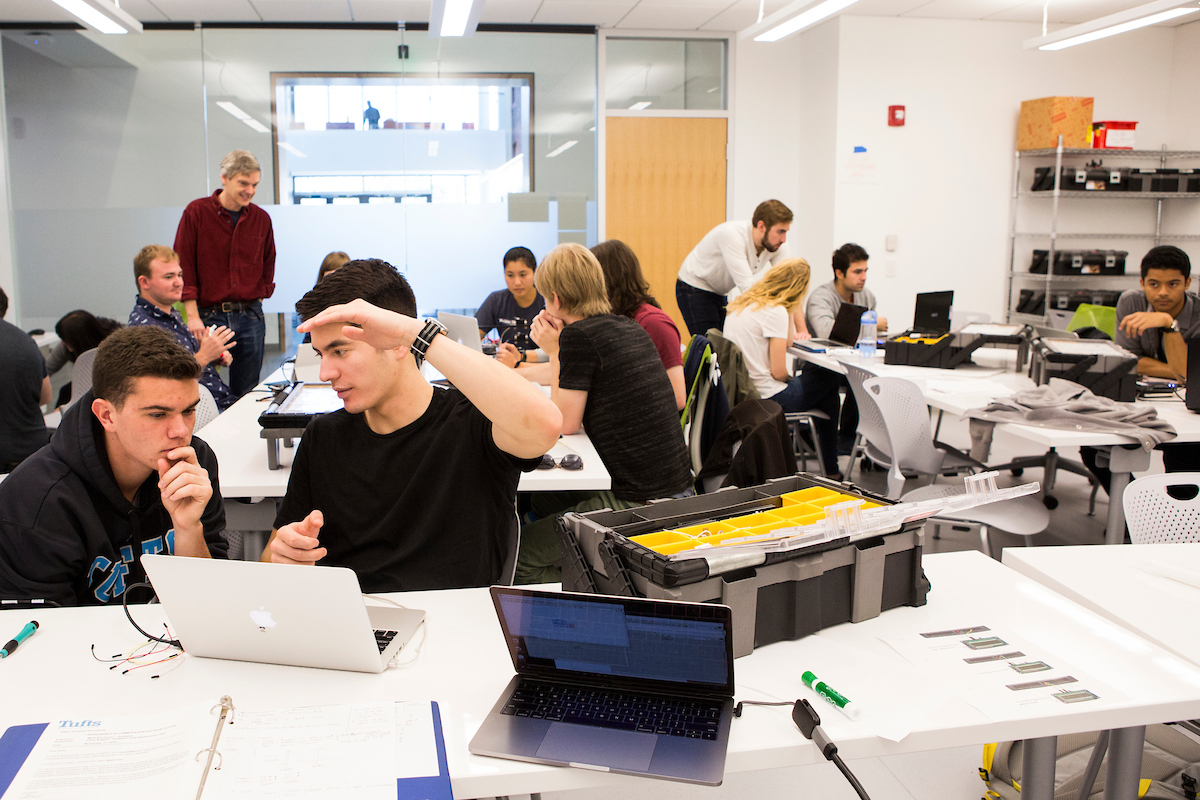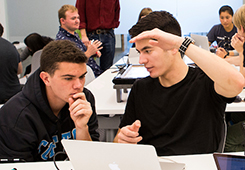Using Student Focus Groups to Improve a Class
You’ve finished teaching your class and it’s already time to prepare to teach it again! You have student evaluations to give you some information about how the course went, but you still have questions. Did the class you just taught help your students learn? Do they remember anything? Has it helped prepare them for their next classes? What can you do to improve it?

At Tufts, three engineering instructors are exploring ways to improve their courses for undergraduates. In addition to carefully reading end-of-course evaluations and arranging for the Center for the Enhancement of Learning and Teaching (CELT) to conduct midterm feedback sessions, each has invited students who’ve taken their class to a focus group session to talk about their experiences in the class.
For each session, the instructors reserved a room, ordered pizza, and sent out invitations to students who had taken the class. During the animated sessions, students talked about their experiences in the class, often elaborating on each other’s comments. As students talked about what helped them learn, what interfered with their learning, and offered suggestions for improvement, there was frequently laughter and good-natured groans.
Although each of the instructors came prepared with questions concerning the course organization, usefulness of the textbook, class climate and pace, once these thoughtful students got started talking, they covered all of these topics, and others with little prompting. Some of what the students said confirmed the professors’ views about how the students viewed the class; other comments were surprisingand perhaps even more helpful.
What can a focus session help you do?
- Identify problems – Engineering professor of practice Ron Lasser already had some ideas about what worked and what didn’t from a midterm feedback session he had invited CELT to conduct with his students, and from the students’ final evaluations of the course. But he had a number of changes in mind he hoped would address some of those problems, and he wanted to check in with students about the proposed changes. His advice: if you are going to conduct a feedback session, start the session by telling students to be absolutely frank about what worked and what didn’t. Then listen carefully and take notes.
- Get feedback on proposed improvements – Brian Tracey had put in place some improvements based on midterm feedback from his students, and wanted to be sure they would work as planned. He created a spreadsheet listing problems and proposed changes, and invited students and TA’s to work through it as he asked for their responses. The worksheet gave him concrete answers to his questions, and uncovered some areas where students felt the changes would make the class worse rather than better. Professor Tracey was able to avoid putting in place some time-consuming changes, and focus on solutions the students thought would work better.
- Prepare to teach a class for the first time – Brian Aull was preparing to teach a course he had never taught before, and wanted to find out from students who had taken the class from another instructor previously what had helped them learn, and what could be improved. When the students he invited arrived for the session, he discovered that they all knew each other. Unlike his freshmen students, these sophomores had learned that they did better in their classes when they worked together. In fact, they disclosed (along with a lot of laughter) they had become so closely bonded that they made a pledge to help each other succeed. They studied together, did problem sets together and had persuaded each other to come to this problem session together to help the next set of students.
All of these instructors emphasized that it is important to listen carefully to the students, seek clarification and examples when necessary, and avoid being defensive. These instructors also asked a CELT staff member to help conduct the session and then talk about how to evaluate the feedback and address the results.
If you decide to conduct a feedback session, consider these suggestions:
- Decide on your goals. Before you set up a student focus group, decide what you want to get out of the session. Do you want to get reactions to changes you implemented? Understand from the students’ point of view what worked well and what did not? Solicit suggestions for improvement? Get some new suggestions to improve learning?
- Determine how you’ll run the session. Do you want to conduct an informal focus group session or structure the session to get specific feedback? Will you conduct the session yourself or arrange for an outside facilitator so you can concentrate on listening to the students without having to worry about logistics? How would you like to set up the room? If it is a small group, consider having students sit around a table, or arrange chairs in a circle. Regardless of how you plan to conduct the session, be sure to start by telling students your expectations for the session and thanking them for taking the time to give you feedback.
- Have students introduce themselves. Consider what you want to know, and what you want them to know about one another. Give each student a minute or two to tell each other their name, major, whether the course was a requirement for their major, etc.
- Pass out pencils/pens and paper or a handout if you want them to write before speaking. Giving students a few minutes to jot down thoughts allows those who need more time to formulate their thoughts before responding. Be careful to avoid having only certain students speak. You may need to go around the room to ask each student for their thoughts.
Although focus groups can be time consuming to organize and run, they can offer a wealth of feedback when done with care.
In this PDF we offer some sample plans for informal and structured sessions.




